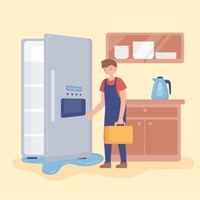Kenmore refrigerator not cooling. Firstly, it’s important to confirm whether or not the compressor is actually working in the first place. Check to see whether or not there’s power supplied to it.
Then, check if it’s pumping air into the pipes by using a multimeter set at 100 ohms (or any basic ohm meter will do). Place the meter in between the 3 wires connected on the side of the compressor.
This way, you’ll be able to tell if resistance can travel through your equipment when you turn it on, meaning it should make some noise when turned on and receiving sufficient voltage.
Kenmore refrigerator not cooling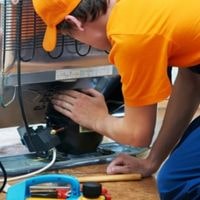
Check the condenser coils and see if they are dirty. If you notice the condenser coils are dirty, clean them. You can use a vacuum cleaner to remove dust from the coils.
The fan motor takes air through the condensing unit so that it can pass over your compressor.
If this motor stops working, you won’t be able to keep your home or business cool properly because you’re affecting the efficiency of your refrigerator.
Evaporator Fan
Try spinning the blade of the fan with your hand to see if it spins freely. If it does, then see if the motor of the fan is making an unusual noise. It might be faulty. However, if the blade seems stiff, change the motor because it is faulty.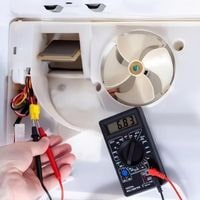
Furthermore, if the motor appears to have no life at all, check its windings with a multimeter for continuity. The motor should be replaced if it has no continuity.
Temperature Control Thermostat
To test your thermostat, turn the temperature dial on your refrigerator to its highest setting if it is equipped with a dial control.
If there is a click, you know that the temperature control rod inside of the dial is working, which means that if you hear no more than one or two slow clicks, then there shouldn’t be much reason to worry about replacing the temperature control cartridge altogether if it passes this method of testing.
In any event, an electronics or appliance technician should always be consulted later in the process to ensure that all may indeed be OK from here on out.
Start relay issues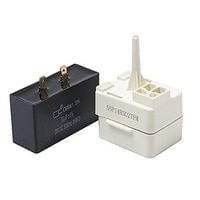
The start relay aids in starting up the compressor. Normally, power is transferred from the start relay to the start winding, which begins to turn off. If something is out of place, however, this process won’t occur.
When that occurs, the fridge won’t be cold enough or even fail altogether. To determine if it’s faulty, it’s important to test for continuity between the run and start terminal sockets.
If there is no continuity with these tests, then you’ll know your start relay is faulty and needs replacing.
Additionally, if there’s a burnt odor with your current one, you will also need to replace it since that’s typically an indicator that it’s time for a new part!
Dirty condenser coils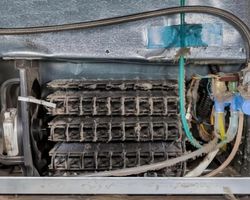
Most refrigerators have coils on the back or bottom of the unit. The coils are what allow the refrigerator to be cold, which is why it’s important that they stay clean.
As you use your refrigerator, residue may build upon these coils, thus leaving behind an unpleasant odor and decreasing functionality.
If your refrigerator stops cooling properly, the first thing you should check is if the coils are dirty–if so, clean them.
Faulty Start Capacitor
The start capacitor of the refrigerator is responsible for providing power to the compressor during start-up if the capacitor is defective.
Then it may not be able to supply the necessary energy, which subsequently will prevent the compressor from getting started. As a result, the fridge will not cool properly.
To determine if the start capacitor is faulty, first test it on a multimeter; if it doesn’t pass inspection, replace it with a new one (these are often very cheap and readily available).
Defective Compressor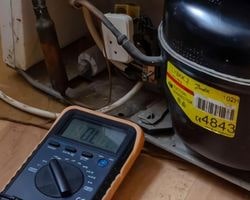
A pump that compresses the refrigerant and circulates the refrigerant through the evaporator and condenser coils. If the compressor is not working, the refrigerator won’t cool.
An easier way to determine if this is causing your unit to break down is by checking that all of your other components are still functional.
Before replacing it yourself, test that all of your other parts – like your thermostat or defrost mechanism – are actually working correctly.
Although it may be product design, why you don’t notice larger problems with any of these other parts but rather odd things such as food spoiling more quickly or you noticing increased humidity levels, it’s best to be safe so contact a technician if you need help.
They should be able to handle replacing a defective compressor for you and ensure it operates smoothly afterward.
Main Control Board problems
The main control board is rarely the cause of a door that doesn’t close, open, or both.
So before replacing this part, you should test all of the other components as outlined in our Troubleshooting Guide to see if any of them are defective.
If none of the other components are bad, replace the main control board.
Thermistor Default
The thermistor monitors the refrigerator temperature and sends the readings to the control board. The control board regulates power to the compressor and evaporator fan based on what it learns from the thermistor readings.
If a problem is detected, the control board will shut down the appliance’s motor, effectively stopping all functions until a technician has been called.
Such a faulty reading can be caused by an issue with the thermistor/thermal cut-off, typically as a result of broken or loose wiring near its terminals or as a result of damage that has begun short-circuiting it.
By testing it with a multimeter, you can determine if this is indeed what is causing your faulty readings and if it is, you can replace this component under warranty, giving you peace of mind that your appliance will continue working as normal without any problem for longer.
